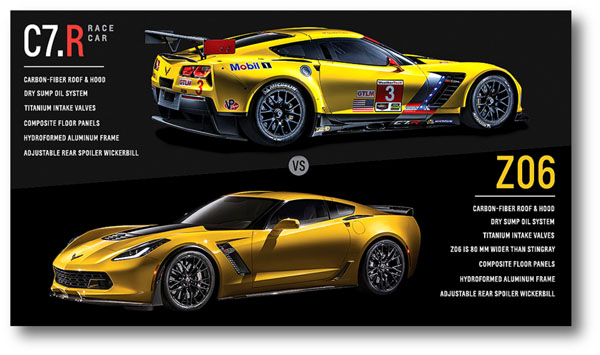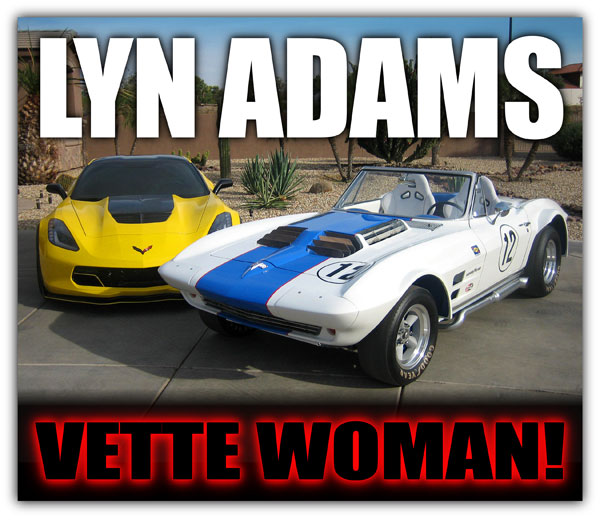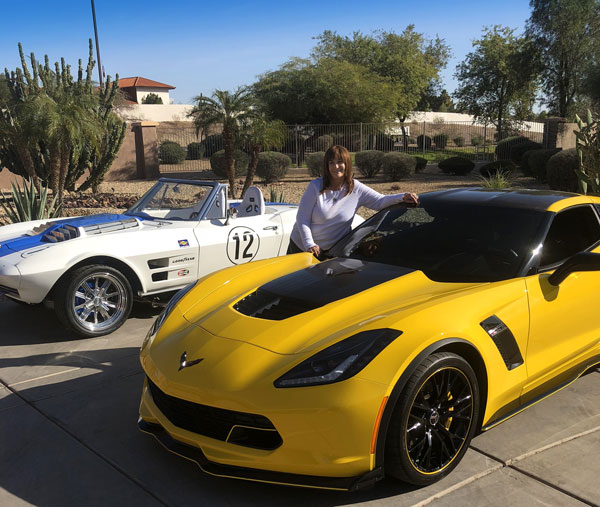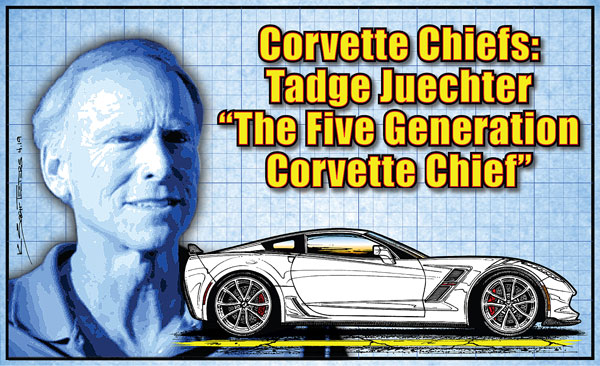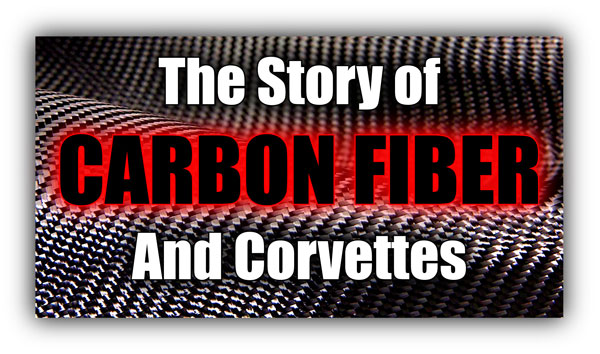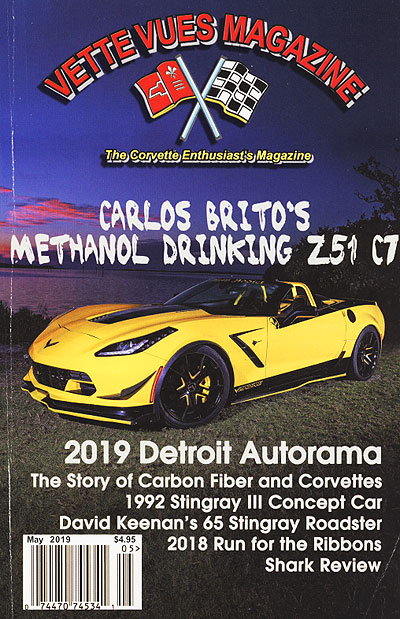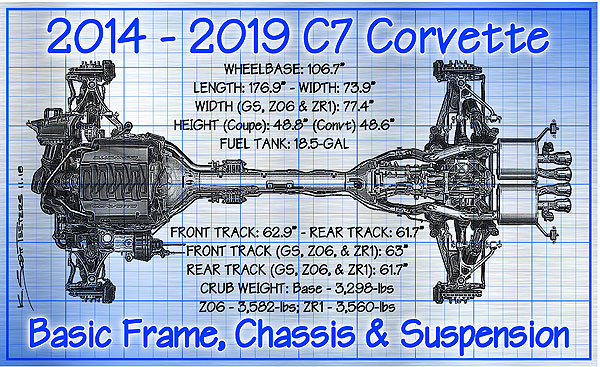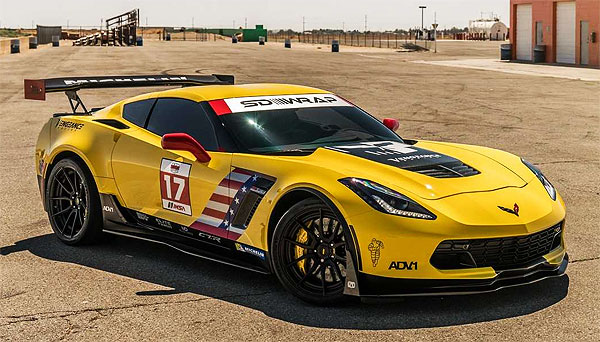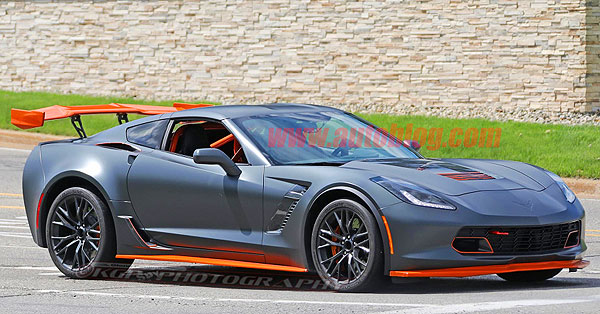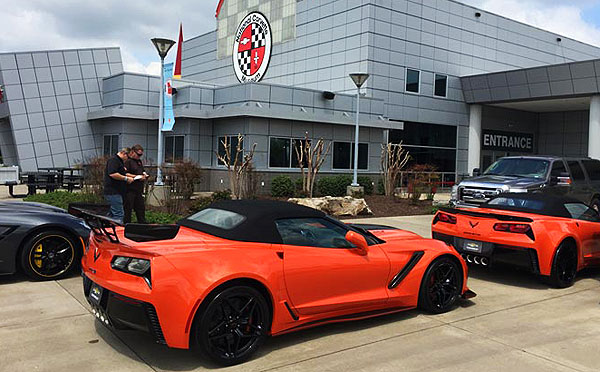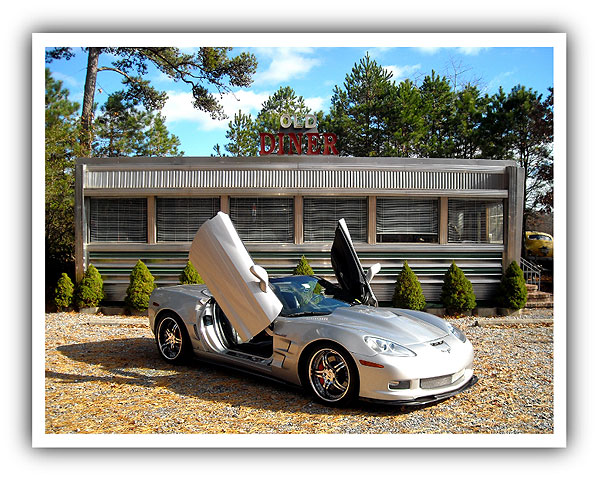Dateline: 5.2.22 Graphics & Illustrations by K. Scott Teeters, Photos GM Archives, this story was first published in the April 2017 issue of Vette Vues Magazine – Update – The C8 Z06 has been all over the Corvette community, as it should be. Clearly, the car is a vast improvement over the C7 Z06. At the April 29, 2022 Corvette Bash event at the National Corvette Museum, Corvette Product Planner, Harlan Charles made it perfectly clear when he said, “The C8 Z06 is a race car that you can drive on the street.” Continue reading “Z06 Corvette Story, Pt 4 – The C7 Z06 and Z06/Z07”
Category: C7 Z06
Philadelphia Gal, Lyn Adams: VETTE WOMAN!
Lyn Adam’s 27th and 28th Corvettes; 2015 Z06 & 1964 Wintersteen Grand Sport Corvette Replica
Dateline: 2-24-21 – This story was first published in the April 2018 issue of Vette Vues Magazine – Owning lots of Corvettes is typically something mostly guys do. But Lyn Adams of Litchfield Park, Arizona is no ordinary Corvette lover. Lyn is actually a transplant from Philadelphia, Pennsylvania. In 1967 Lyn’s father bought her a 1966 Ford Mustang convertible, a pretty cool car for a young lady back in the day. But it wasn’t what she really wanted. Lyn wanted a Corvette! She quickly traded in the Mustang at a local Chevy dealer and got what she really wanted; a 1967 327/300 Corvette convertible. That was Corvette 1-of-28!
Lyn truly has an eclectic taste for Corvettes. While her first Vette was bone stock small-block (those 327/300 engines had 380 lb/ft of torque, more than an L84 327 Fuelie!), her affection for Corvettes runs the gamut from mild-to-wild. Many of Lyn’s 28 Corvettes were just drivers, but most were personalized to some degree; some mild, some wild. Except for the Z06 Corvettes, all of her Corvettes have been convertibles. 
We’re showing a few of Lyn’s previous Corvettes that include; her 2009 GT1 Championship Special Edition Z06 (number 24 of 38 yellow versions that were built), this is the car she traded in to get her 2015 Z06), a red 2005 Corvette with black & white checker trim, a Millennium Yellow with black & yellow checker stripes and red stripes (this car had a nitrous system that her husband Jody installed), a white 1996 Corvette with black & white checker trim, a red 1976 Corvette with a supercharged 350 and Hooker Header side pipes, and a custom-bodied 1966 Corvette that Lyn’s husband Jody built, packed with a 427 big block with dual quads on a Pro Stock-style tunnel-ram intake manifold, and an L88 cam.

Not shown is Lyn’s first 1967 327/300, a 1966 with a 350 built to a 365 (this car was stolen and then sold), another 1967 Corvette, a 1979 Corvette with Corvette Light Blue paint and a oyster-white interior, a red 1990 Corvette, and another 1967 Corvette painted with the pearl white paint on the “belly of the shark” blended up into purple.
For a period of Lyn’s Corvette ownership experience, she had three Corvettes at a time for 10 years in a row!
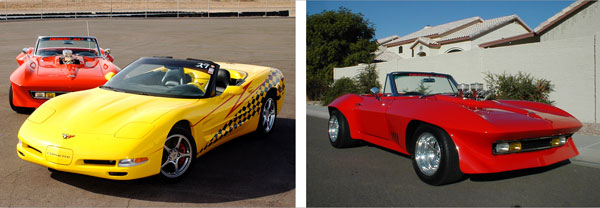
Lyn’s current stable of Corvettes (only two) consists of two cars that couldn’t be much more different. The 2015 Z06 was purchased new and is a modern electronic supercar with all the creature comforts one could want. This is a car that if driven with discipline can be a daily driver or a grand touring car.
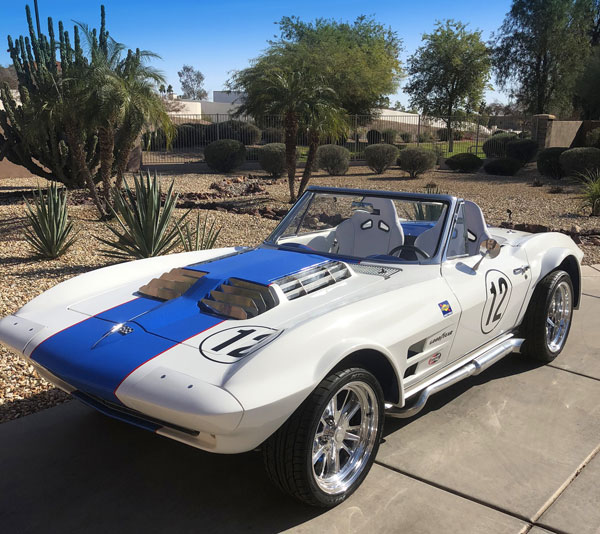
The 1964 Wintersteen Grand Sport Replica is a throwback to the old mechanical performance cars.
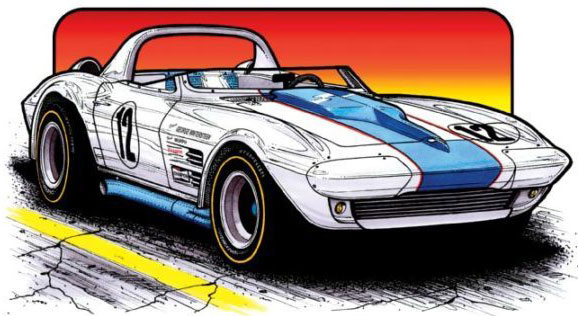
The Grand Sport replica was built by Lou Dussia; owner of Dreamboat Marina in Warren, Pennsylvania. In 1997 Lou found a 1964 Corvette convertible owned by local resident, Charlie McKinsey. The car was under blue tarps and had been sitting in Charlie’s front yard for eight years. The car was complete enough for a project car, so Lou bought it for $5,000.
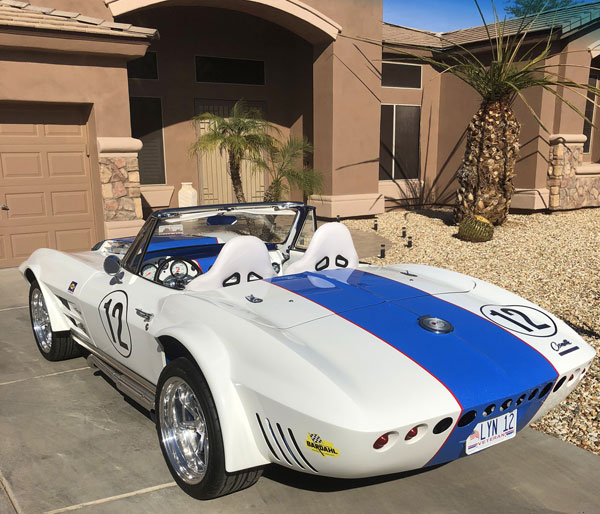
The car is a “looks-like” tribute car and is based on a production 1964 Corvette convertible, so there’s no tube frame, lightweight suspension components, and all-out racing hardware on the car. However, this is an impressive and stout street rod Corvette, but not a daily driver or anything you’d want to take a long trip in. Lynn and her husband won’t be driving this car to Bowling Green. Let’s look at the details of the 1964 Wintersteen Grand Sport No. 12 replica first.
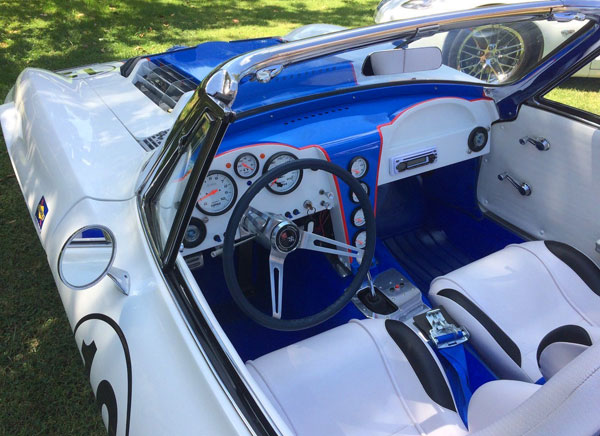
When Mr. Dussia found the bare bones of this 1964 Corvette in a junkyard in Pennsylvania sometime in the 1990s, it was probably a few years away from total disintegration. The year-round damp climate in Pennsylvania eats old, unprotected cars alive. After Lou disassembled the car, the frame was cleaned, repaired where needed, and most of the suspension parts and drum brakes were replaced and rebuilt to basically stock. The wheel flares, hood, dash, and front and rear panels were manufactured by Wrangler Boats of Akron, Ohio.
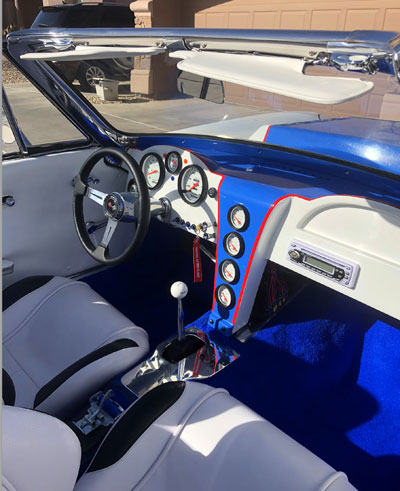
The view under the hood is close to period correct and mighty impressive. The 400-cubic-inch small-block Chevy was bored to 406-cubic-inches. The heads are aluminum with a mild 10.0:1 compression and there’s an MSD Ignition. What looks like a set of classic Weber Carbs are actually Dellorto Carbs with short air stacks. This setup might be replaced soon.
There’s no chrome on the engine, as everything is polished. The exhaust headers are ceramic-coated and the side-pipes are fabricated. Lyn is considering replacing the current header/side pipe set up with a set of Hooker Header side pipes. The transmission is a 4-speed Muncie with a Hurst Shifter. Dan Ruhlman, of Dans Auto and Speed in Youngsville, Pennsylvania, performed all of the engine work.
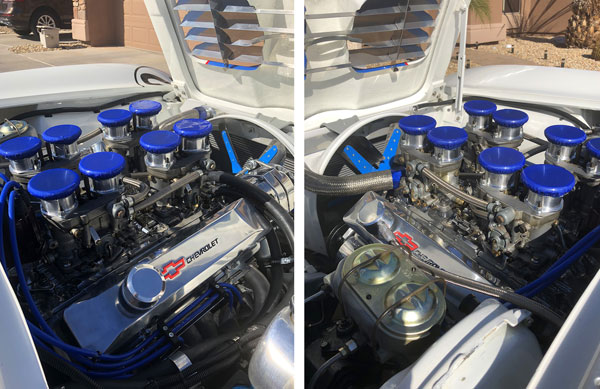
The dash panel of the car imitates the real Grand Sport Roadster racecar. The interior is nicely finished with racecar flavor, trimmed in rich blue carpeting, refinished white door panels, and white OBX Racing Seats. Lyn replaced the factory-original steering wheel with a smaller-diameter steering wheel from Summit Racing for additional legroom between the seats and wheel. Steering effort isn’t a problem thanks to power-assist steering.
She also plans to soon get a convertible top for the car and clear headlight covers so that the car can be driven at night and on not-so-warm Arizona days. Lyn recently added the 18-inch American Racing Heritage Series Wheels, shod with Nitto Tires; 295×35 ZR18 on the rear and 255×35 ZR18 on the front. Tires and wheels were purchased from Big-O Tires, in Surprise, Arizona. These are the style wheels that were typically used on the 289 and 427 Shelby Cobras in the 1960s. Lyn chose them as an “in-your-eye” poke at the Cobras form when the real Grand Sports beat the pants off the Cobras at the Nassau in 1963.
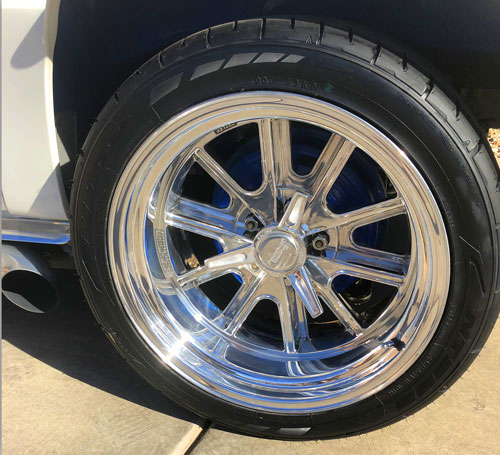
In 2008 builder Lou Dussia needed quick extra cash to help complete a land purchase and sold the car to Mike Terry of Indiana in July of 2016 for $25,000. Terry did not drive the car very much and quickly sold the car. Owner number three added the Wintersteen livery and put the car up for sale. You can tell from just the small sampling of Lyn’s previous Corvettes, she likes her Vettes on the wild side. When Lyn bought the car in November 2017 for $42,000, it only had 390 miles on the new odometer. Typically, street rods don’t rack up a lot of miles.
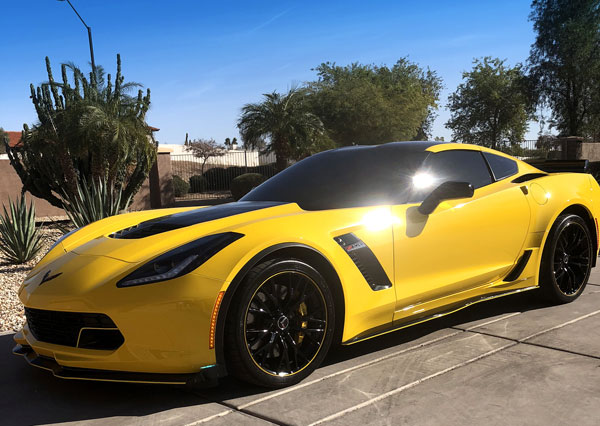
After taking delivery of the car, Lyn and her husband Jody discovered numerous minor problems, which Jody took care of. As of this writing in the end of January 2018, the odometer now reads 468 miles. Since street rods are almost always “works-in-progress” cars, more changes and upgrades are in store.
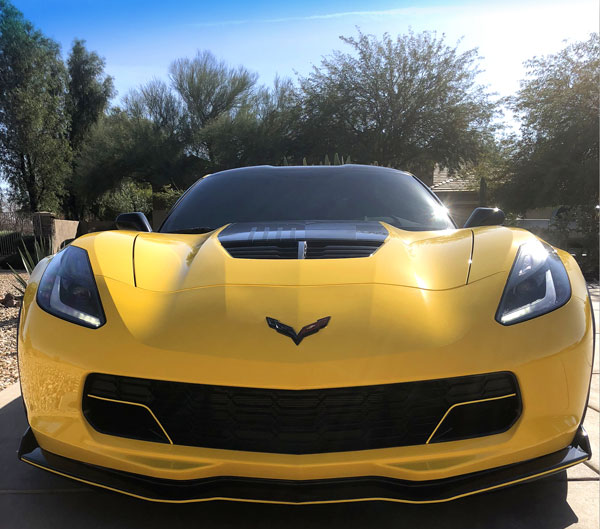
Now let’s move on to Lyn’s modern supercar, her 2015 Z06 Corvette. Unlike her 1964 Grand Sport Replica, the C7 Z06 is not only loaded with 650-horsepower and 650-lb/ft of torque, it has creature comforts and goodies never imagined in a 1960s performance car. It is truly a night-and-day comparison! Chevrolet packs so much into the basic Z06, the only real options are; coupe or convertible, manual or automatic transmissions, interior appointments, stripes and trim, and the Z07 Performance Package that takes the car to “track car” level.
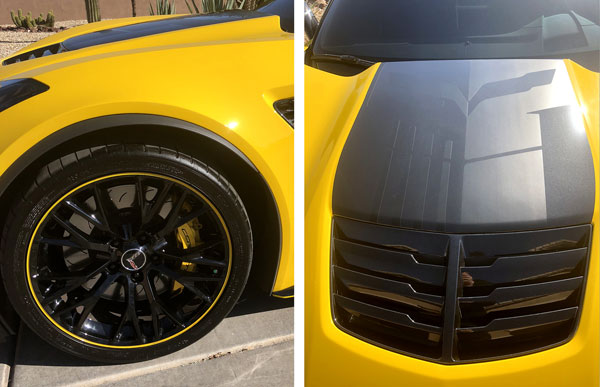
Lyn chose Velocity Yellow Tintcoat paint with a black hood stripe, the taller rear wing, and black wheels with thin yellow pinstriping around the edge of the rims. She really wanted the 8-speed manual transmission, but there was an availability issue with Bowling Green, so she took RPO MSU 8-Speed Paddle Shift Automatic Transmission option; which makes the Z06 a few ticks quicker.
Lyn wanted an all-black interior, so she went with the 2LZ Equipment Group that includes; Bose 10-speaker stereo system, cargo net, and shade, head-up display, memory package, auto-dimming inside and outside mirrors, heated and vented seats, power seat bolster/lumbar, advanced theft deterrent, and universal home remote. So far, Lyn added a Jake hood graphic to the black hood strips that are gloss black on one side and matt black on the other one side, and had a clear bra installed that runs from the front to the back of doors.
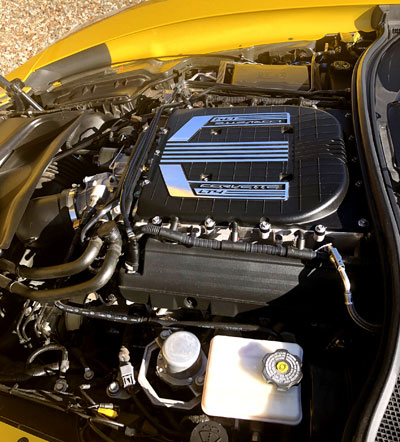
Lyn Adams and her Corvettes are no strangers to Vette Vues, Her 1966 Corvette with the big-block 427 and tunnel ram was in the January 2002 issue and her 2009 GT1 Championship Edition Z06 was in the December 2013 issue. Her husband, chief mechanic, and best friend Jody says he doesn’t mind cleaning and wrenching on Lyn’s Corvettes, but the Grand Sport will probably get some changes soon. It won’t be long before they’ll start to hit the local car shows, and no doubt, more trophies will be coming home. So what lies ahead for Lyn Adam’s Corvette experience? More Corvettes, I’m sure. – Scott

PS – Since this story was first published in the April 2018 issue of Vette Vues, Lynn’s Grand Sport has been given some sweet upgrades. I will be updating this story soon.
To subscribe to Vette Vues Magazine, CLICK HERE.
Only $25.99 for 12 issues!
Here’s the Wintersteen Grand Sport #002 in action at the Simeone Museum in Philadelphia, Pennsylvania.
Corvette Chiefs, Pt. 5 or 5: Tadge Juechter
Corvette chief engineer Tadge Juechter delivered the C7 Corvette, the C7 Z06, the C7 Grand Sport, the C7 ZR1, and soon the 2020 mid-engine C8 Corvette.
Dateline 1.29.21, Images: Graphics by the Author, Image from GM Archives – All five Corvette chief engineers contributed mightily and in their own unique ways. But only Tadge Juechter has the distinction of having done hard engineering on five generations of Corvettes. When Juechter went to work in 1993 as chief engineer Dave Hill’s right-hand-man, there were two objectives; keep the then-current C4 fresh and interesting; and design and develop the most revolutionary Corvette to that date, the C5. After Hill’s retirement, Tom Wallace was Vehicle Line Engineer (VLE) and chief engineer for the Corvette. Wallace accessed that because of Juechter’s 15 years of experience, he was the right man for the chief engineer position. Wallace stayed on as VLE and eventually took an early retirement offer.
While Juechter didn’t have the racing background that Hill and Wallace had, he was raised in a Porsche household and liked to tinker around with mechanical things. As a young teenager growing up in Chappaqua, New York in the ‘70s, Juechter built a prehistoric mountain bike with a full front and rear suspension. His folks even gave him their wrecked Cadillac to take apart.
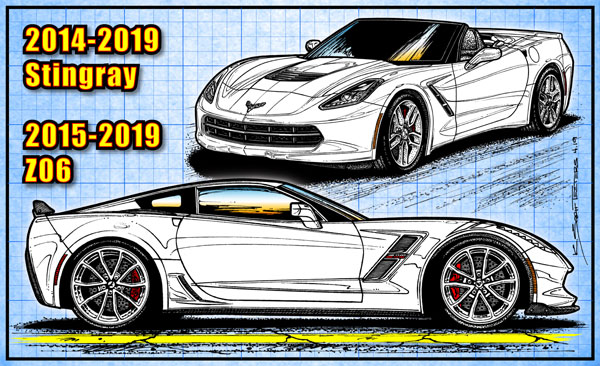
During Juechter’s college years at Stanford, he worked two summers on a GM assembly line, an experience not to his liking. Juechter graduated with degrees in aerospace and mechanical engineering and had no intention of working for GM. Then in 1978 a friend asked Juechter to tag along to a GM interview and ended up interviewing as well; and was offered a job. The late ‘70s and ’80 was a challenging time for the American car industry, but at least Juechter had a solid job. In the car business, if your ambition is upper management, an MBA is a must-have degree. Juechter earned his MBA from Stanford GSB in 1986.
By the time Juechter interviewed with Hill for the position of Assistant Chief Engineer, he was aware of the aging Corvette and impressed with the in-the-works C5. The C4’s plastic interior was a major bone of contention with Juechter. Hill was impressed and Juechter got the job. The jump from the early ‘80s designed C4 to the C5 was revolutionary. The creation of the Corvette Racing Team was the beginning of the deliberate merger of Chevrolet engineering and Corvette racecar engineering that was poured into the C5 Z06. Early on, Chevrolet general manager Jim Perkins wanted an inexpensive Corvette that would appeal to racers; this became the ’99 Hardtop and the Hardtop became the C5 Z06. While the C6 was an evolved version of the C5, no one was expecting the 505-horsepower 427 Z06 with an aluminum frame and dry-sump oil system.
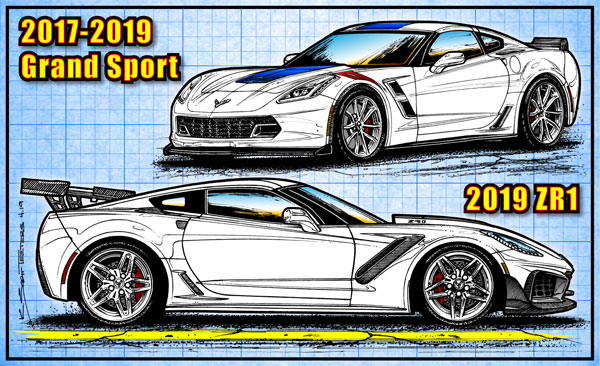
From 2005 to 2008 sales averaged 36,816 cars per year. In 2006 Tom Wallace was Corvette VLE and chief engineer. While Wallace was a racer, his Corvette experience was a little thin. When Wallace learned that Juechter and his team were working on a mid-engine prototype, he knew that Juechter was the brains behind the Corvette. Juechter was promoted to chief engineer, North American Corvette.
Juechter has said that he was shocked when given orders to make the C6 ZR1; the goal was to build the best possible Corvette for $100,000. A big-block was briefly considered but rejected because of its weight. All-Wheel-Drive was not possible on the C6’s platform. The Z06 was to be the track car and the ZR1 would be GM’s halo, Grand Touring supercar.
Then the economy stalled out and the in-the-works C7 was put on hold indefinitely. Wallace took GM’s early retirement offer, leaving the Corvette all to Juechter. When GM slammed into bankruptcy in June 2009, for a time it looked like it was curtains for GM. But it turned out that the government auditor that was looking into the Corvette was a car enthusiast and knew about the pending C7. Upon examining the books, it was discovered that the Corvette was one the few GM car lines that was making money. Juechter’s team was told to get busy on the C7. The Corvette and the Bowling Green assembly plant were spared.
By the time you read this, the C8 will have made its debut and will be the most revolutionary Corvette ever. Previously, the C5 had that honor because of its all-new engine and drivetrain, and its hydroformed perimeter frame and backbone center section. The C6 and C7 generations are both evolutionary versions of the C5. The C5 and C6 are Hill’s Corvettes; the C7 and C8 are Juechter’s Corvettes. As of this writing, we know the basics of the C8, but none of the hard details. So lets look a Juechter’s C7.
A big part of Juechter’s job as VLE is to make sure there’s a Corvette for everyone with a variety of price points, and a base car that offers outstanding visual and performance value. Juechter said, “It helps having worked on the C5 and C6 because you know where a lot of the land mines are.” With horsepower ever increasing, it’s critical that the car be made easier to drive. The base C7 has 455-net horsepower; way more than any big-block ever had; yet the C7 is a car that is easy to live with. The 755-horsepower 2019 ZR1 is absolutely astonishing; it can perform on par with exotic sports cars, yet be a comfortable, usable GT machine. Electronic suspension, steering, braking, rev-matching, paddle-shift 8-speed automatic and fuel management are responsible for a balance of extreme power and civility. Imagine trying to drive a Greenwood widebody racer on the street.
When the C7 was unveiled, fans were stunned to learn that the base model had an aluminum frame and that later the Z06 and ZR1 would be available as a coupe or convertible and with an 8-speed manual or automatic transmission. Another first was achieved; the 8-speed automatic was quicker than the manual version.
Corvette interiors have often been a bone of contention with critics and the C6 took big hits for its interior. To get C7’s interior spot-on, Juechter made sure designers had set-of-the-pants experiences of life inside a 1-G cockpit; to know what it feels like having skin pressing on hard objects. He also made surer there were no distracting infotainment systems; just important information for spirited driving. The C7 has received rave reviews for its interior.
Concerning the C7 ZR1, initially there were no plans to make the car, as designers didn’t think they could do more beyond the Z06. But after a few years, plus aero input from the Corvette racing team, a new plan emerged to make the ZR1 the most powerful, stable, advanced front-engine Corvette ever offered. Many speculated that Chevrolet might build the front engine and mid-engine Corvettes side-by-side, but that will not be the case. C7 production will end in summer 2019 and the last C7 will be a black Z06 that will be auctioned off, with proceeds going to the Steven Siller Tunnel to Towers Foundation.
While Juechter was an integral part of the C5 and C6, those were Hill’s Corvettes. Even though Juechter guided the C7, the C5, C6, and C7 all have Hill’s Corvette DNA. The C8, on the other hand, is Juechter’s Corvette. People expect more of everything today, and everything is riding on the mid-engine C8. – Scott

This concludes my Corvette Chiefs Series. Below are links to parts 1-to-4. Enjoy
Corvette Chiefs, Pt. 1 – Zora Arkus-Duntov
Corvette Chiefs, Pt.2 – Dave McLellan
Corvette Chiefs, Pt. 3 – Dave Hill
Corvette Chiefs, Pt. 4 – Tom Wallace
The above articles originally were published in Vette magazine as part of my Illustrated Corvette Series monthly column.
The Story of Carbon Fiber and Corvettes
The Hottest Automotive Material Since Fiberglass
Dateline: 8.22.20 This article first appeared in the May 2019 issue of Vette Vues – UPDATE: Indulge me for two brief paragraphs on the subject of carbon fiber and Corvettes. First, two “known” secrets; 1. There will be a Z06 and a ZR1 version of the C8 Corvette. 2. GM is committed to electric cars, by 2023 they project over 20 all-electric vehicles and by 2030 almost all GM vehicles will be all-electric-powered. We don’t know how the electrical grid will be able to handle the extra load for electricity, lets hope there are some new technology tricks up engineer’s sleeves. The new C8 uses a 48-volt system; that’s a big jump from the previous 12-volt system that has been around since the 1950s.
Why the extra juice? Allow me to speculate.
The C8 ZR1 will have an all-electric, all-wheel-drive drivetrain with a combined electric motor power of 1,000-horsepower and 1,000-lb/ft of torque. Electric motors have their full torque starting at 1-rpm; that’s why diesel-electric locomotives are so powerful. Here’s the carbon fiber leap. Remember how we were stunned when the 2006 Z06 was debuted and we learned that the frame was aluminum. Next, all C7 and C8 Corvette have aluminum frames. To safely handle the tremendous leap on power, I predict that the C8 ZR1 will have a carbon fiber chassis. Think about it. We’ll see. Stepping off soapbox…
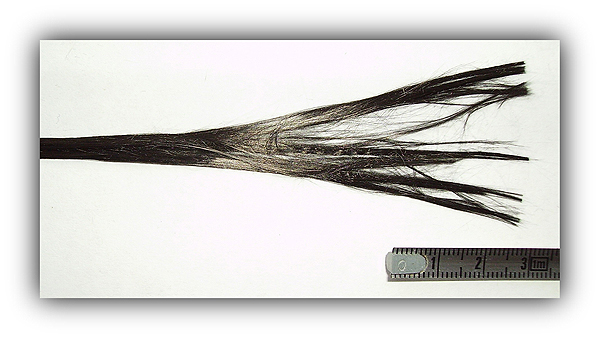
Carbon Fiber is without a doubt the hottest trend in automotive materials since the introduction of fiberglass in the early 1950s. Most car enthusiasts understand that racing technology typically precedes production technology. The first structural application of carbon fiber arrived in 1981 when McLaren built their MP4/1 Formula One racecar. McLaren engineer John Barnard built the car’s monocoque chassis/tub completely out of carbon fiber supplied by Hercules Aerospace, in Wilmington, Delaware.
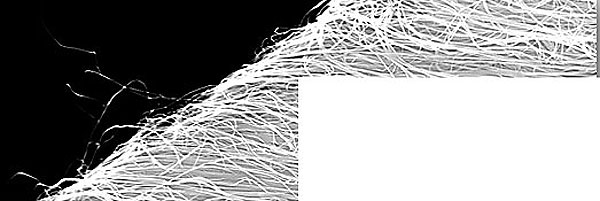
This was a radical departure from traditional monocoque-type construction that consists of a central “tub” structure that the front frame and suspension, engine, and drivetrain all bolts onto. Formula One competitors were suspicion of the new material and called it, “black plastic” fearing that it would shatter and vaporize in a crash situation. This misperception was dispelled at the 1981 Monza Grand Prix when driver John Watson became carbon fiber’s first “crash test dummy”. Watson’s car spin out and crashed was so violet that people that saw the crash on television cried, thinking the worst. But Watson climbed out of what was once a fine racecar and waved to the crown, unhurt.
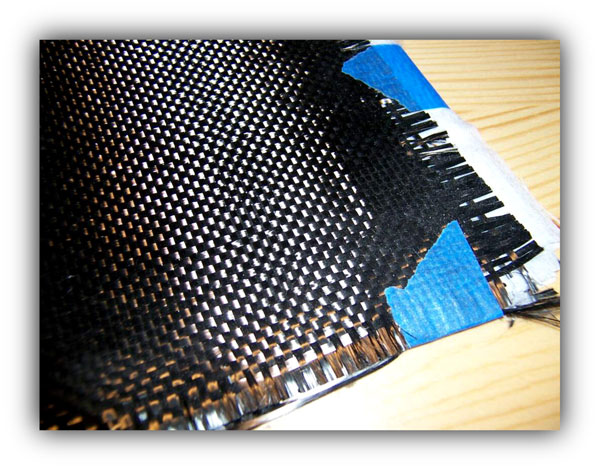
Watson said in an interview, “Had I had that accident in a conventional aluminum tub, I suspect I might have been injured because the strength of an aluminum tub is very much less than the carbon tub.” McLaren’s objective with the use of carbon fiber was to reduce weight and increase strength. Watson’s accident proved the point and almost overnight, Formula One car builders switched to carbon fiber tubs.

In 1879 Thomas Edison is credited with inventing carbon fiber in his quest to develop the electric light bulb. Edison formed threads of cotton and bamboo slivers into a specific shape and baked them at high temperatures. Cellulose in cotton and bamboo is a natural polymer, consisting of repeating segments of glucose. The baking process “carbonizes” the material and becomes a carbon copy of the beginning material – a carbon fiber with an exact shape. U.S. Navy ships used the same filaments into the 1960s because they were stronger and more resistant to vibration than tungsten.
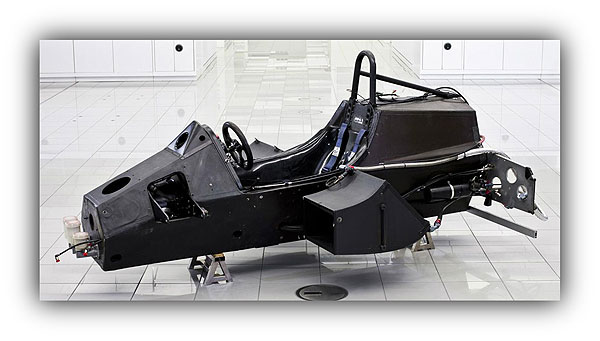
Modern carbon fiber was born in 1956 in a Union Carbide lab by physicist Roger Bacon when he was performing experiments with the triple point of graphite. This is where the solid, liquid, and gas are all in thermal equilibrium. Using a device similar to early carbon arc street lamps, Bacon observed that when he decreased the pressure in his device, the carbon would go from the vapor to solid, forming a one-inch long stalagmite-like structure on the lower electrode that he called “whiskers”. These whiskers were 1/10th diameter of a human hair that you could bend and kink, but they weren’t brittle. He called these long filaments the “perfect graphite.”
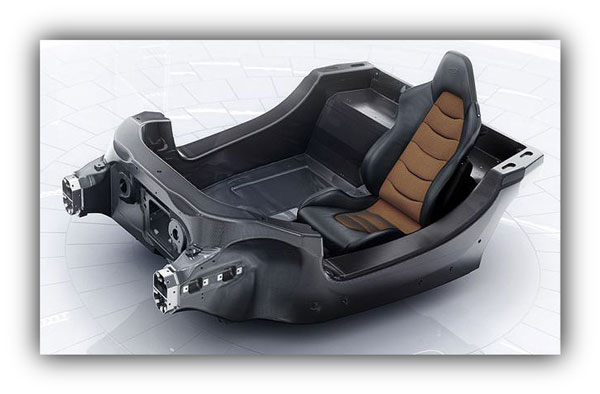
Further experimentation developed the stiffest, strongest materials by weight that had ever been created. Steel has a tensile strength of 1-2 Gigapascals (GPa); Bacon’s fibers had a tensile strength of 20 GPa. Later development brought the carbon fiber’s strength up to 200 GPa. Bacon’s work eventually developed carbon nanotubes (CNTs); hollow cylinders of graphite with diameters on the order of single molecules. Today, CNTs are used in energy storage, device modeling, boat hulls, water filters, sporting goods, thin-film electronics, antennas, coatings, actuators, electromagnetic shields, and yes, automotive parts. Auto applications include; energy storage applications, batteries and superconductors; printable, thermoformable, capacitive touch sensors used to replace membrane switches in interiors; and polymer composites with mechanical properties, thermal conductivity, and enhanced electrical connectivity.
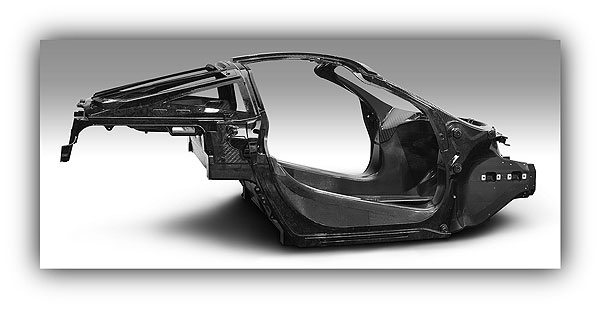
For performance fans, the use of CNT polymers means second-generation carbon fiber material. Consider the leap from C5 to the C5 Z06 with it’s bolted and bonded hardtop roof that increased structures stiffness by 12-percent, compared to the C6 Z06 with its aluminum frame that was 50-percent stronger in bending resistance; compared the C7’s aluminum frame that is 60-percent stiller than the C6’s steel frame. What levels of structural stiffness might we see with a carbon fiber frame, or better yet a carbon nanotube fiber frame?
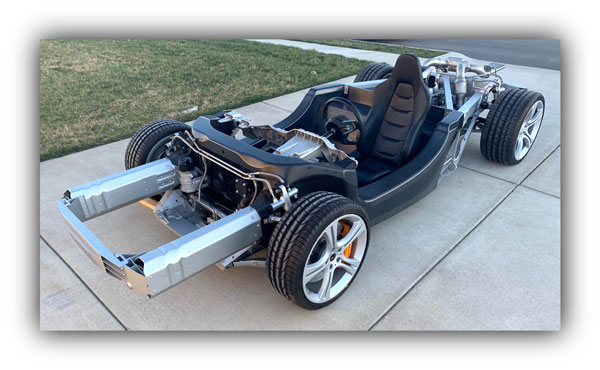
Carbon fiber has two major downsides; 1. cost; and 2. recycling. Elon Musk’s SpaceX company is working on bringing down the cost of carbon fiber because large carbon fiber parts are an essential element in reducing the cost of space exploration. Sir Richard Branson’s Virgin Galactic space planes are made from carbon fiber. Carbon fiber is definitely “space-age” material. Another factor in why the cost of carbon fiber is so high is simple supply and demand. Nearly half of the airframe of the Boeing 787 is made from carbon fiber and offers a weight savings of 20-percent. The 787’s airframe is made of 20-percent aluminum, 15-percent titanium, and 5-percent other. Composite structures require less scheduled maintenance than non-composite structures.

The second big downside of carbon fiber is that it is difficult to recycle. Used material can be ground down, or exposed to very high temperatures and, or chemicals to recover the carbon fiber. Remember, the carbon fiber is embedded in resin. Unfortunately, the carbon fiber can be damaged and the matrix resin materials in the composites can be destroyed. Damaged carbon fibers can never be used again in carbon fiber applications.
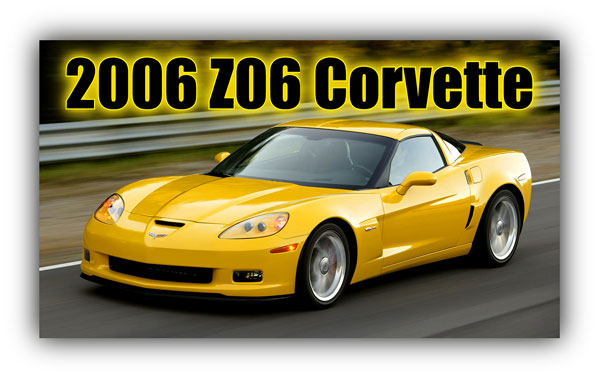
In 2017 researchers from Washington State University developed a new recycling method using mild acids as catalysts in low-temperature ethanol to break down thermosets. To break down the cured material, researchers raised the material temperature to allow the catalyst-containing liquid to penetrate the composite and break down the complete structure; basically dissolving the material. This allowed the researchers to recover the carbon fibers and the resin material. The researchers have filed for a patent and are developing a commercial process to take to the marketplace.

So, there have been numerous reasons why it has taken so long for carbon fiber parts to integrate into Corvettes. The 1992 Stingray III concept car had a carbon-fiber tub as the central part of the car’s chassis. In 2004 the swansong Corvette special edition option was the Commemorative Edition. This was a beautiful option group with special trim, stripes, and dedicated paint that cost $3,700 for the coupe and convertible. The option was available on the Z06, but with one big difference; the Z06 version had a carbon fiber hood that weighed only 20.5-pounds, compared to 31.1-pounds for the stock hood; a savings of 10.6-pounds. The Z06 Commemorative Edition cost $635 and the carbon fiber hood was only available on the Z06 Commemorative Edition option.
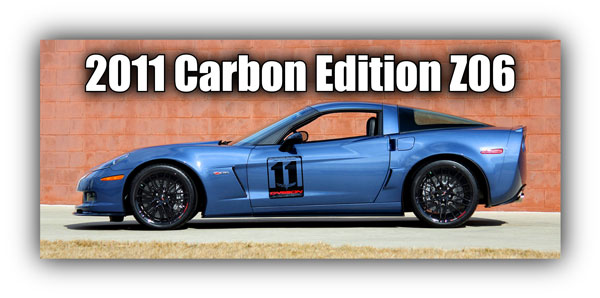
When the 2006 Z06 came out, everyone was agog over the new LS7 427 engine with its dry-sump oil system; widebody; new wheels and suspension; aluminum frame; and magnesium engine cradle and roof section. It was easy to miss the carbon fiber body panels staring you in the face. The Z06’s front fenders, front wheelhouses, and rear fenders were carbon fiber and the interior floor was a carbon fiber and balsa wood sandwich. The carbon fiber components certainly added to the $65,800 price of the 2006 Z06 – $21,200 more than the base model coupe.

The 2009 LS9-powered, supercharged ZR1 was the Corvette no one was anticipating that caught everyone by surprise. From 2009 to 2015 the C6 ZR1 was the most powerful Corvette ever offered. But the ZR1 wasn’t just about power. The new ZR1 had more carbon fiber than any previous Corvette ever had. The ZR1 featured a carbon fiber raised hood with a clear polycarbonate window that showed off the LS9’s intercooler; the dedicated front fenders were painted carbon fiber; and the front fascia splitter; roof bow; fixed roof panel; and the side rockers were clear-coated carbon fiber.
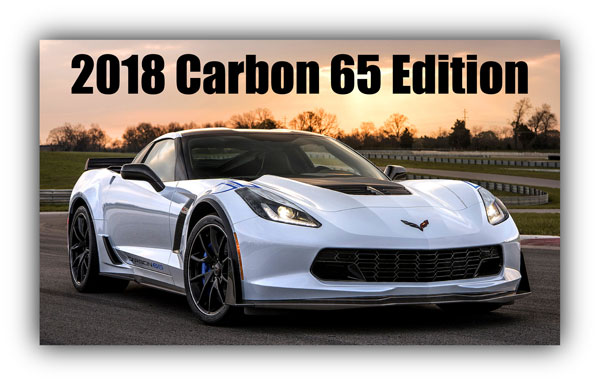
From 2010 to 2013 Chevrolet played mix’n-match with parts, making specialty parts from the ZR1 and Z06 available on the very popular Grand Sport; making buying a new Corvette a boutique experience. In 2011 Chevrolet introduced the $90,960 Carbon Edition Z06. RPO CFZ Carbon Fiber Package for the Z06 was a $3,995 option that added black carbon fiber splitter, side rockers, roof panel, and a body-colored ZR1 rear spoiler.
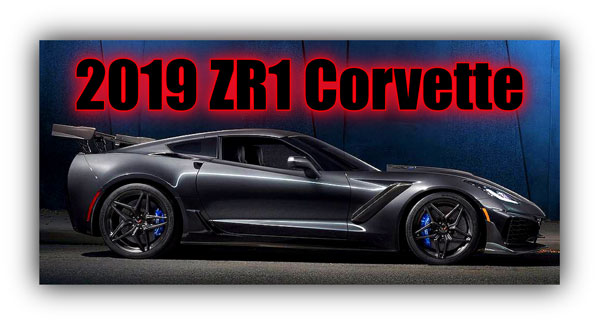
Carbon fiber integration continued with the C7, but mostly as options. RPO C2M, the $2,995 Carbon Fiber Dual Roof Package, and the $1,995 RPO C2Z Visible Carbon Fiber Roof were available on all coupes from 2014 to 2019. From 2015 to 2019 RPO CFV, the $3,995 Carbon Fiber Ground Effects was available. And from 2014 to 2019 RPO FAY, the $995 Carbon Fiber Interior Appearance Package dressed up the C7’s interior.
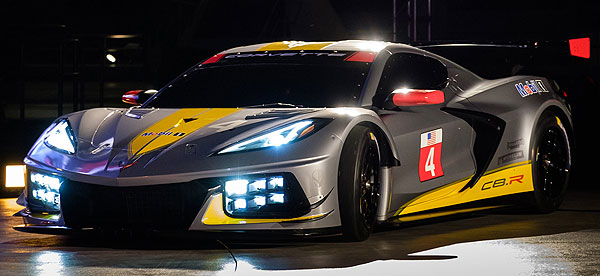
The 2015 Z06 blew everyone away with a 145-horsepower raise from the C6 Z06. Carbon fiber parts included the dedicated raised hood and the removable carbon-fiber roof panel. Previous Z06 Corvettes had a fixed roof panel for additional rigidity. And all optional carbon fiber ground effects were available painted and unpainted.
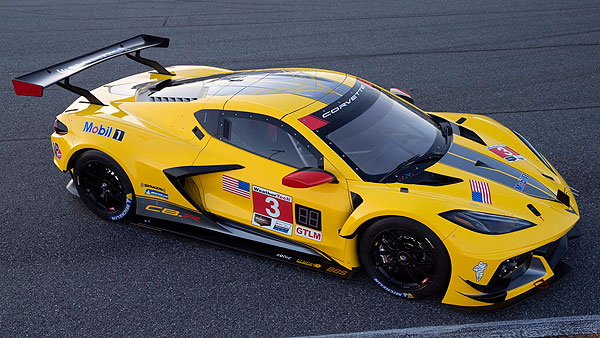
In 2018 Chevrolet celebrated Corvette’s 65th Anniversary with the Carbon 65 Edition. Only 650 cars were offered on the Grand Sport 3LT and Z06 LZ models. The $15,000 package was dripping with special features. New to the lineup of carbon fiber features was the new rear spoiler and quarter ducts. Carbon fiber ground effects and the hood was also included in the package. And lastly, the $122,095 2019 ZR1 has a carbon-fiber halo hood and engine cover; adjustable high rear wing; front splitter and end caps; and steering wheel rim.
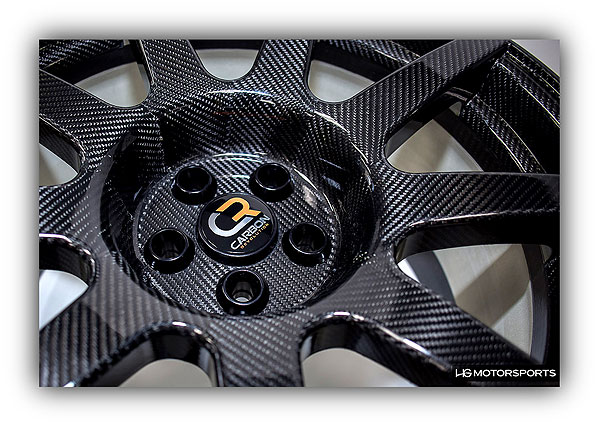
Carbon fiber will only become more ubiquitous in the future. What might we expect to see soon? The C8 structure may well use some form of a carbon-fiber tub, or perhaps carbon fiber side rails and other frame and chassis components. Carbon fiber wheels and perhaps some suspension parts might also be in Corvette’s future. Check out the cars in the Daytona Prototype International class at any IMSA race this year, that’s where you’ll find the clues as to what to expect.

Yes, the mat weave of carbon fiber is a look that has taken over the modern automotive and motorcycle hobby. Today you can get nearly anything either made with carbon fiber or with the carbon fiber look. As the price of carbon fiber comes down it will probably become the preferred material for performance cars. Several companies are today making and offering carbon fiber wheels. Carbon fiber 3D printers are also on the marketplace, as well as carbon fiber vinyl wrap material. Indeed, carbon fiber has become the “look” of our time. – Scott

This story was originally published in the May 2019 issue of Vette Vues.
A one-year subscription is only $25.95!
The C7 Corvette Chassis, Pt 6: The Chassis Tadge Juechter Built
Tagdge Juechter’s Genesis Program C7 Chassis
Dateline: 1-20-20, Illustrations & graphics by K. Scott Teeters – The C6 Corvette was a much-improved C5 and was well-received upon release. Fans liked the crisp new look, the new interior (for a while), and the extra grunt. Since the successful arrival of the performance Z06 model in 2001, every new generation Corvette is expected to have a Z06. Within minutes of the C6’s debut, the next question was, “Where’s the Z06?” The following year when the C6 Z06 was unleashed, there was an unanticipated surprise; an aluminum chassis.
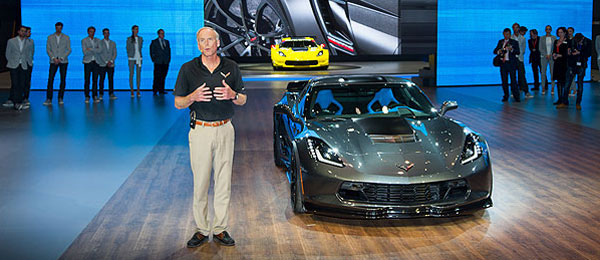
This wasn’t on anyone’s wish list and was a total surprise. It wasn’t even on Zora Arkus-Duntov’s Christmas list! Weighing in at just 3,132-pounds, you have to go back to 1964 to find a lighter Corvette (3,125-pounds). Powered by the mighty 427 LS7 engine with 505 net-horsepower, with C5-R suspension technology, the C6 Z06 was better suited for the track, although many learned how to drive the new beast successfully on the street. The C6 Z06’s aluminum chassis had no trouble handling 638-horsepower in the ZR1 configuration. Bravo Corvette chassis engineers!
When Tadge Juechter’s C7 Corvette debuted, fans were stunned to learn that the base model C7 was built an even better version of the Z06’s aluminum chassis. But wait, there’s more! The same new aluminum chassis would be used for the coupe AND convertible Corvette. This was a major breakthrough and bespeaks of advanced engineering. Here’s how Juechter’s team did it.
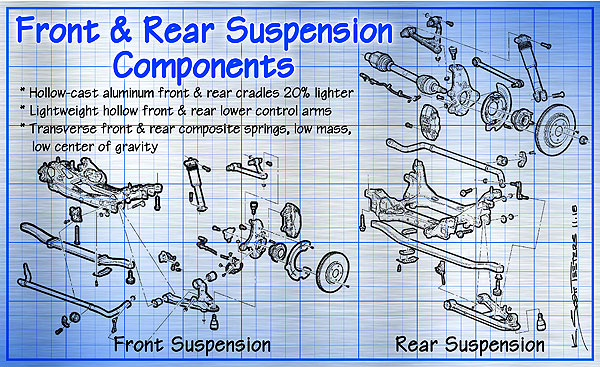
Juechter’s objective was to build a modern performance car that delivered enhanced driving experience, more efficiency that yielded more performance. Every element had to contribute to the overall performance and there would be nothing fake. That explains everything that we see on the C7 Corvette, but what’s unseen is even more amazing.
As we learned from the C5 with its hydroformed side rails, stiffness matters. Juechter is on record stating that while hydroforming was an engineering game-changer, the downside is that parts have a uniform thickness; even in areas where it isn’t needed. Hydroformed parts cannot be tailored for areas that need greater or less strength. Enter the Genesis Software Program.

This is almost computer magic. Engineers first determine the overall block space they want; length, width, and height. Then they determine where they want to place the major components; engine, transmission, suspension assemblies, cabin parts, etc. This creates negative spaces where the structure needs to be to hold everything together. The Genesis Program then synthesizes an optimum structure so that engineers can then take the load design and break it down into parts that can be fabricated and joined together. Afterward, dynamic stress and crash testing is performed and parts modified to meet predetermined objectives.
The C7’s hydroformed aluminum frame rails were optimized for the best the aluminum industry could offer, in terms of tensile strength, lightweight, and materials-joining technology. New aluminum metallurgy and aluminum fastening technologies allow engineers to augment the hydroformed frame with 7000-Series aluminum extrusions designed for specific areas; such as engine/front suspension assembly, transaxle/rear suspension assembly mounting points and frontal collision areas.
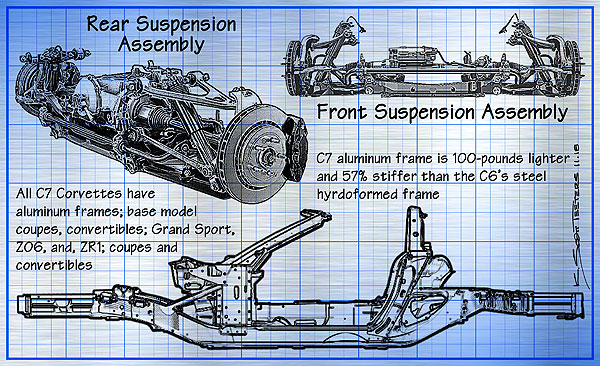
Careful consideration to the placement of major components was also critical. Juechter’s team felt that the C6 was slightly nose-heavy. Components were adjusted so that the C7 is now rear-biased, allowing more load on the rear wheels for better traction at launch; like a racecar. The front wheels were moved forward 1-inch making the wheelbase 106.7-inches. This is the longest wheelbase Corvette ever made. The shortest was the C4, measuring 96.2-inches. Moving the wheels forward also allowed for more space under the hood for the new LT1 engine and various auxiliary systems. This also preserved “crash space” in the front.
Offering an aluminum frame for the coupe and convertible was a big challenge for the team. But because the basic frame structure is so strong, it didn’t need additional roof structure via a fixed roof. The net result is that not only can the Z06 and ZR1 have lift-off rood panels, but both can also be offered as a convertible. This was unimaginable for the C5 Z06, C6 Z06, and the C6 ZR1. According to Ed Moss, the C7 structural engineer group manager, his engineering team tailored sixteen different thicknesses of various grades of aluminum from 11-mm to 2-mm. The completed C7 aluminum frame is 100-pounds lighter than the C6’s steel frame and is 60-percent stiffer. Juechter said that engineers consider the C7’s aluminum chassis to be the most beautiful part of the C7. Perhaps someday Chevrolet will offer a transparent carbon fiber body option.
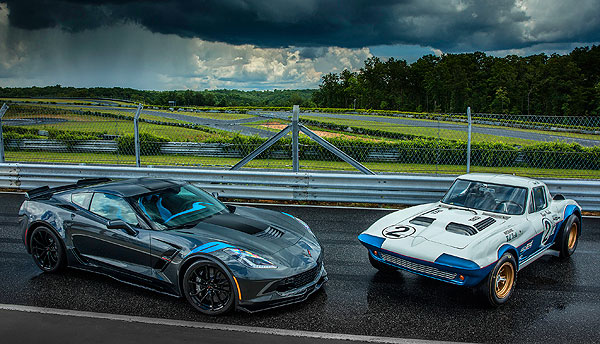
The C7 frame was also designed for aerodynamic efficiency. In the past, engineers tended to only consider how air passed over and under a performance car. The C7 literally breathes. Spaces under the car’s skin and in between the chassis structure were designed for the internal ducting for engine cooling, brakes, transmission, and differential cooling, and venting. Other spaces allowed for electrical and plumbing fixtures for coolant, fuel, and air conditioning ducting.
The C7 design team worked closely with the Corvette Racing Team on airflow management because even racecars are concerned about fuel consumption, as well as top speed dynamics and stability. Two of the most obvious ducting and venting features is the air extractor on the hood, and the NACA ducts on the top of the rear fenders.
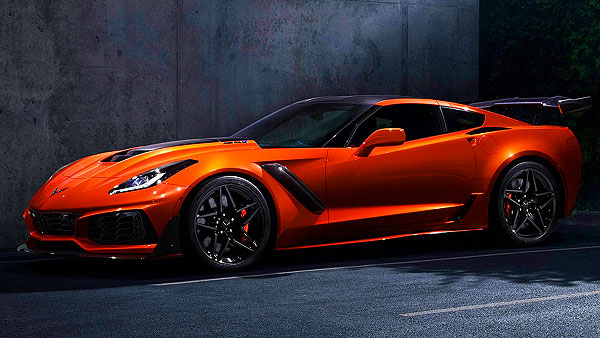
Taking a lesson from the C6.R Corvette racecars, the C7’s radiator is tilted forward. One-third of the air that passes through the radiator is vented out of the hood. The hood louvers are angled so that the exiting air flows tightly over the car creating additional downforce to the nose of the car; thus eliminating the dreaded nose lift.
Heat exchangers (radiators) for the transmission were placed in the back, close to the transaxle with air ducted through the NACA duct feeding into the heat exchangers and then vented out through vents next to the taillights. This is just another example of how every element on the C7 has a defined purpose.
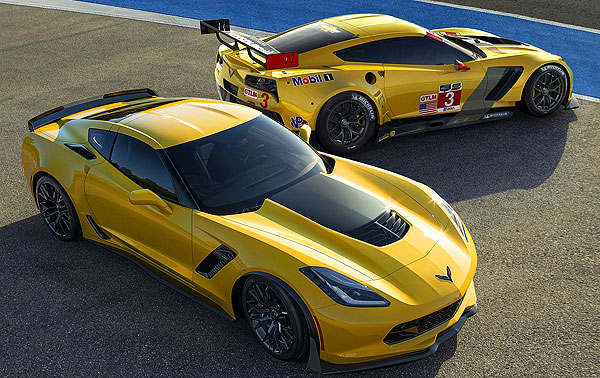
All of the foundational work that went into the C7’s chassis laid down a structure what was easily adaptable to the $2,780 Z51 suspension option that included; performance brakes with slotted rotors; dry-sump oil system; suspension upgrades; special wheels and tires; electronic limited-slip differential with a cooler, performance gearing, and an aero package. The Z51 was for drivers that wanted to use more of the C7 460-horsepower and explore the pleasures of the C7’s superior structure.
The 2015 Z06 with its supercharged 650-horsepower LT4 engine, wide-body, suspension, and tire enhancements work wonderfully with the C7’s basic structure. The same can be said for the 755-horsepower ZR1; the basic structure is up to the task. Arguably, the most interesting use of available C7 components is the Grand Sport. It has the aggressive-looking Z06 body and suspension parts that take using the base model’s 460-horsepower to a whole new level.
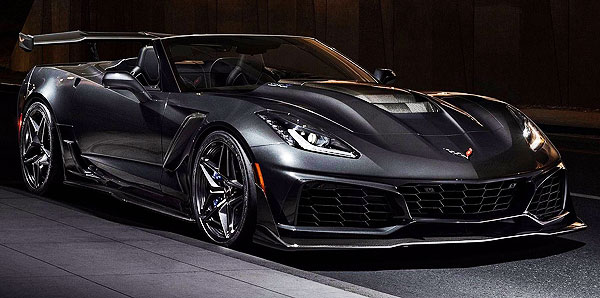
I will now go out on a limb. At the C7 ZR1 debut in 2018, Juechter said that his engineers had taken the C7 as far as they could with the ZR1. Are they working on a C9 Corvette to sell alongside the mid-engine C8? If so, will it be built on a carbon fiber chassis? When it comes to Corvettes, things always evolve upward. – Scott

Corvette Chassis History, Pt 1 – C1 Chassis – HERE
Corvette Chassis History, Pt 2 – C2/C3 Chassis – HERE
Corvette Chassis History, Pt 3 – C4 Chassis – HERE
Corvette Chassis History, Pt 4 – C5 Chassis – HERE
Corvette Chassis History, Pt 5 – C6 Chassis – HERE
Speed Society Delivers Stunning Z06 C7.R-Inspired Street-Beast! – VIDEO
Speed Society’s Salute to the awesome success of the Corvette Racing Team
Dateline 11.10.18 – What sets the Corvette apart from every other car in America is that since 1955 the Corvette has always been about racing. From the glory days of Duntov to today, every Corvette chief engineer has made sure that lessons learned from racing are poured into production Corvettes.
With the 2018 racing season completed and the Corvette Racing Team racking up another championship, the timing of the Speed Society Z06 couldn’t be better. The Z06’s LT4 engine has been goosed up to 850-horsepower and the deco on the car is a salute to the C7.R. The rear wing and ADV.1 two-piece forged alloy wheels pulls the whole look together.
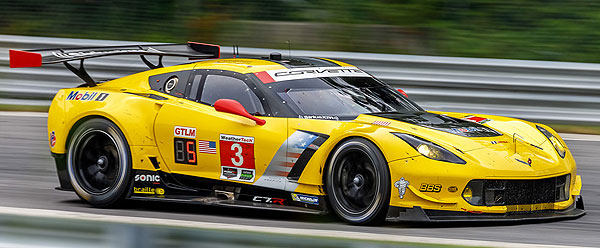
Check out the rest of the details and gallery of photos HERE. – Scott

Is Chevy Working on a COPO Corvette?
This could be just another concept Corvette, or it might be a COPO road racer Z06 Corvette!
Dateline: 5.25.18 – The last time we saw something like this was in 2010 when Chevy showed the Z06-X Concept Corvette. The formula is the same; your basic Z06 with all the latest racer-type hardware. This is right out of the old Zora Arkus-Duntov RPO “racer kit” model from the ’50s, ’60s, and ’70s.
Autoblog.com has a full set of images of this variation-on-a-theme, and a report that you can read HERE.

The first time we ever saw something like this was back in 1969 when Duntov held court at the GM Proving Grounds with one of his mule development Corvettes. Zora and his team built a big-block Corvette like a racer would have; they removed everything that shouldn’t be on a racecar and added everything that should be on a racecar, plus a ZL-1 engine! Continue reading “
Is Chevy Working on a COPO Corvette?”
The Tadge Juechter & Harlan Charles Show! ’18 Recap & 2’19 Preview – VIDEO
Harlan Charles & Tadge Juechter Hold Court at NCM’s Latest Michelin Bash Event: 2018 Recap & 2019 Preview
Dateline: 5.2.19 – The National Corvette Museum hosted their three-day annual Michelin NCM Bash from April 26 to April 28. Corvette product manager Harlan Charles and Corvette chief engineer Tadge Juechter delivered a 1-hour and 47-minute presentation recap of the 2018 season and a preview of what’s in store for 2019.
The event also included racing seminars, an update on the 1962 sinkhole Corvette, and using the C7’s navigation system. Chevrolet wants Corvette fans well informed and C7 owners completely up to speed with their car’s capabilities.
Special guests included former Bowling Green plant manager Wil Cooksey and early generation Corvette restoration expert, Kevin Mackay.
FYI, you can read my 2013 interview with Wil Cooksey in the November 2017 and January 2018 issue of Vette Vues; and my Kevin Mackay 2013 interview in the May 2018 and June 2018 issue of Vette Vues. Continue reading “
The Tadge Juechter & Harlan Charles Show! ’18 Recap & 2’19 Preview – VIDEO”
2018 Carbon 65 Z06 Corvette #001 Sells for $1,400,000!!! – VIDEO
Jay Leno, former President George W. Bush, and 2018 Carbon 65 Z06 #001 help raise $1,400,000 for our wounded warriors!!!
Dateline: 1.20.18 – 2018 Carbon 65 Special Edition Z06 raked in an astonishing $1,400,000 at the Barrett-Jackson Scottsdale Auction tonight! Star Power played a heavy roll because not only was former Tonight Show Jay Lenno (and host of Jay Leno’s Garage) on hand, but former President of the United States, George W. Bush, both helped lift this unique Corvette WAY over the million dollar mark.
A short video played before the auction showed President Bush (slowly) driving the 650-horsepower Corvette on his ranch. He joked that it was the first time he’d driven a car since 1992!
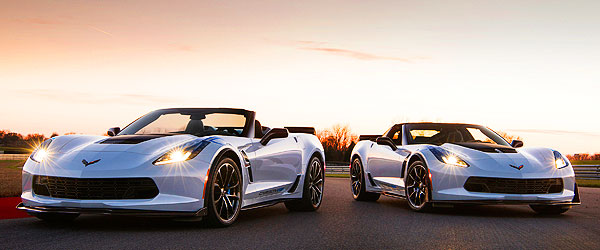
Jay explained that one hundred percent of the proceeds of the sale will go to the Bush Initiative to help our wounded warriors. Continue reading “
2018 Carbon 65 Z06 Corvette #001 Sells for $1,400,000!!! – VIDEO”
HOT Corvette Auction Action Starting TODAY!
Several very interesting and unique Corvettes will be ON THE BLOCK at the Mecum Kissimmee and Barrett-Jackson Scottsdale Auctions over the next few weeks.
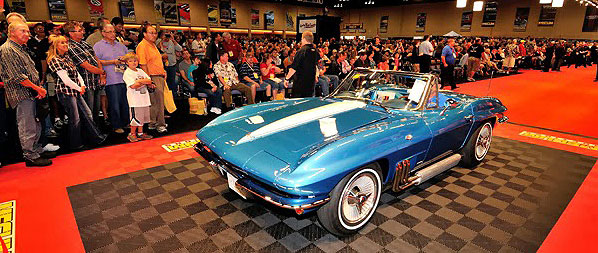
Dateline: 1.5.18, Images: Vette Vues, GM Archives, Mecum Auctions and Barrett-Jackson Auctions – “Auctions”, be they car or even farm auctions, are a lot of fun because it is the best example of “The Marketplace”. Things sell based on what people are willing to pay and not what sellers think something is worth. If a vehicle has a Reserve that isn’t met, that means that the Seller’s notion of the car’s value isn’t in alignment with the Market. If a vehicle has No Reserve, the Market will determine the vehicle’s value.
Bidding Wars and Feeding Frenzies can wildly drive prices up, making an auction a lot of fun to watch. On the other hand, excellent vehicles are often “Well Bought” at very good prices for a variety of reasons; rough condition, poor presentation, high production numbers, and cars that are just plane weird!
Two major car auctions are upon us with some very interesting and unique Corvettes that may or may not find new owners. The Mecum Kissimmee Auction starts today, January 5, 2018 and runs to January 14, 2018. The Barrett-Jackson Scottsdale Auction starts January 13, 2018 and runs to January 21, 2018
Of interest to Corvette and Chevy fans are the following cars;
January 12, 2018 – Mecum Kissimmee, 1969 Baldwin-Motion Phase-III GT Corvette. Lot F139
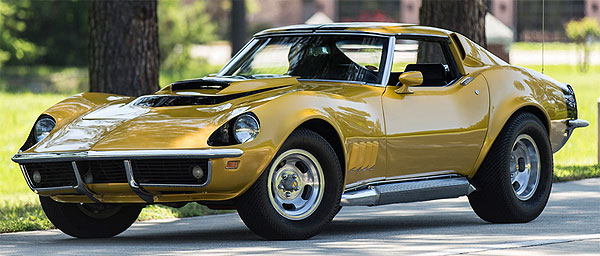
HOT Corvette Auction Action Starting TODAY!”
NEW!!! Corvette Report’s “Vette of the Month” Contest
We are happy to announce the launch of Corvette Report’s “Vette of the Month” Photo Contest.
Here’s the deal.
Dateline: 11.25.17 – Send us your best photo of your Corvette and we will post it on our “Vette of the Month” photos page.
At the end of the month we will pick a winner, and announce it as a post here at Corvette Report.
The winner will get;
An “America’s Old Glory Sports Car” print of their year Corvette, signed and numbered by K. Scott Teeters.
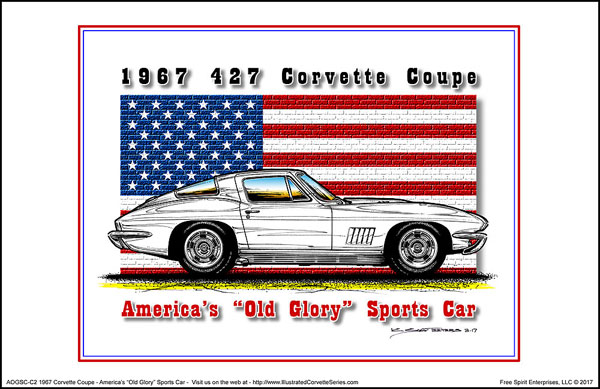 PLUS! a feature story in Vette Vues Magazine.
PLUS! a feature story in Vette Vues Magazine.
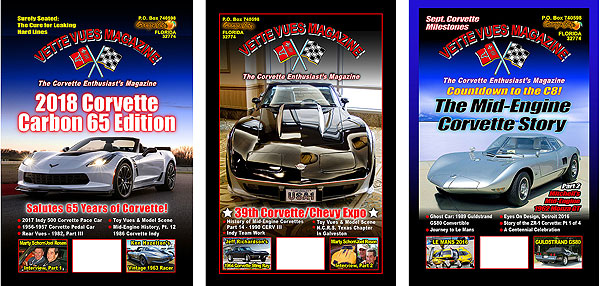 After the story is published in Vette Vues, we will post it on CorvetteReport.com.
After the story is published in Vette Vues, we will post it on CorvetteReport.com.
To enter, use the below Entry Form. Continue reading “
NEW!!! Corvette Report’s “Vette of the Month” Contest”
ANNOUNCING! America’s Old Glory Corvette Tees & Sweats
Show your Corvette passion
with a heap’n help’n of
patriotic American pride!
 We have every year “Old Glory Corvette” layouts from 1953 to today,
We have every year “Old Glory Corvette” layouts from 1953 to today,
available on tees, sweats and more!
Whatever year Corvette you own or love, we have a shirt for you.
Sizes Small to 2XL.
Prices start at just $13.95!
 To start to order your America’s Old Glory Corvette shirt,
To start to order your America’s Old Glory Corvette shirt,
CLICK HERE. Continue reading “
ANNOUNCING! America’s Old Glory Corvette Tees & Sweats”

